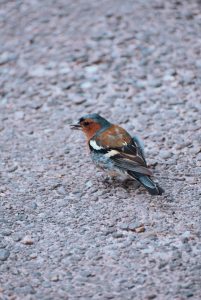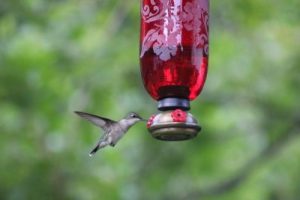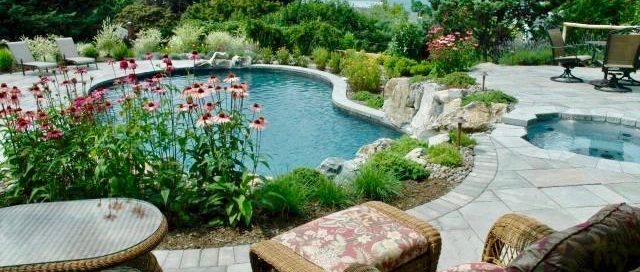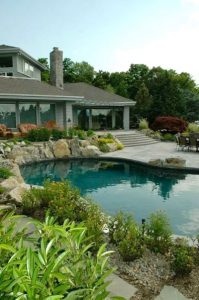Birdsongs Are Actually Good For You
(While reading this update, why not scroll down to our earlier blog and open its Youtube video of delightful birdsongs.)
Update: 5-23-23 of earlier April 2020 blog
Just this past week, The Washington Post published a piece under the section topic “Brain Matters.” It cites two studies released only last year that say “seeing or hearing birds could be good for our mental well being.” It also says that “more contact and interaction with nature are associated with better body and brain health.”
Even if you are listening to birdsongs in urban areas, the research suggests that you inherently associate birdsongs with natural environments and gain the benefit. And — even if you are listening to birdsongs simply through headphones — you can receive the same uplift.
It also follows, then, how helpful it must be to create your own backyard natural retreat where you can escape daily.
You might enjoy this additional link to an even earlier blog of ours. It covers a project where clients of ours called on us to create just such an outdoor paradise. Having always loved birds but had not seen many for a while, the couple contacted Deck and Patio. In addition to birds, they were also hungering to see butterflies and wanted something special.
“We helped them achieve their heart’s desire,” says our own Dave Stockwell. “And whether you go for something as expansive as their retreat, or have more modest wishes, bringing birds to one’s yard is a very, very good thing.”.
Enjoy our earlier blog which follows now:
_______________________________________________________
Note: We highly recommend opening the above video before reading further. That way you can experience the transforming effects of bird songs — while reading about the transforming effects of birds songs and how to entice more birds to your yard!
Birdsongs’ Restorative Effects
Because of extensive sheltering-in-place, even city dwellers are hearing natural sounds these days that usually are muted by the normal drone of human activity.
Rebecca Franks wrote on Facebook that she used to think there weren’t really any birds in the city where she was living. She rarely saw them and never heard them. “I now know they were just muted and crowded out by the traffic and people. All day long now I hear birds singing.”
And what better time to learn that hearing birdsongs is actually good for you. A recent study says that, depending on the particular birdsong and its type and frequency, the sound of birds can actually help one feel better and react more positively to life — offering restoration from stress and cognitive fatigue.
Attracting Birds to Your Yard
Before rushing out to put up more bird houses and feeders, remember attracting birds takes some planning.
Deck and Patio has been in the business of creating bird-friendly landscapes for over 25 years. And we’ve learned a thing or two.
For example. Birds aren’t as happy with your perfectly cut and edged expansive lawns as your neighbors might be. And while the odd bird house or feeder will help attract a few birds to a nicely manicured area, birds, prefer a bit of density.
“Songbirds love bushes and trees,” says Deck and Patio’s Dave Stockwell. “Birds of all sorts drop by for the food, comfort and privacy such lush vegetation gives them. And in turn for access to some clean water and natural munchies, like berries, they’ll give you an opera of stress-reducing songs. Berries, by the way, have been known to tempt even timid birds out of hiding, like woodpeckers.”
Here’s an example of a modest natural sanctuary we designed/built for one of our clients.
Although the neighbors of these clients have a natural wooded area, we added bushes, trees and plenty of plantings to their own yard. This means birds and their songs will be closer by and easier to hear. The crepe myrtles, for example, contribute to an extended picture-perfect landscape season — they bloom from August through October, providing a haven for a variety of visiting birds.
Some April ‘To Do’s’
During March and April many birds migrate back up north. Ruby-throated hummingbirds are just one species that make their home in Mexico and Central America during winter, and are already back in our neck of the woods.
So if you want to invite them to your yard, it’s time to fill hummingbird feeders etc. As for blooms, horticulturist Sandra Vultaggio says that these hummingbirds particularly love rhododendrons and azaleas. “They also love Columbine, which they track as they move north.”
Other delightful birds — e.g., the Baltimore Oriole and certain Warblers — also arrive on Long Island and other areas of the Northeast in April.
Oriole migration coincides with that of hummingbirds, says Vultaggio — arriving usually a week ahead of their smaller rapid-flapping friends. For the Orioles, she puts out oranges, which they love.
Like hummingbirds, Orioles winter in Mexico and Central and South America. It’s worth planning for their arrival because they don’t stay around long. They begin migrating south again in August. So get your Oriole-feeders out early.
Some ‘Not To Do’s’
“April is a good time of year to postpone any severe pruning you might want to do,” says Vultaggio. “This time of year is usually mating season, and squirrels and birds are busy building their nests.”
“You don’t want to be cutting down trees while these creatures are nesting. Also, it’s helpful to the birds if you don’t make a thorough clean up of your yard during spring maintenance. Leave behind loose twigs and leaves for them to build their nests.”
During April, gardeners often find it necessary to go after insects and pests that might destroy their garden. This can mean applying fungicide or spraying insecticides.
“Be sure that when you do this, not to spray the blooming trees and shrubs. You don’t want to harm birds, bees and other pollinating insects,” says Dave.
Extra Tips
If you’re not an avian expert and are not sure which bird is which, you’ll appreciate the Audubon Soceity’s app. Not only will it help you identify the birds you see, but you can keep track of them, share photos, etc. There’s a good tutorial on their app’s information page, just click here.
So make your home’s outdoors as much of bird sanctuary as possible. If you help the birds…they’ll help you right back! In the meantime, if you need a little restorative birdsong uplift, try out Bird Song Opera. It’s great.












